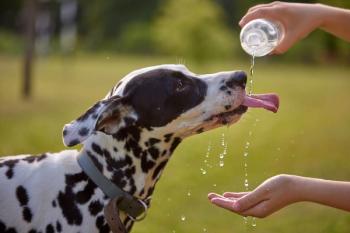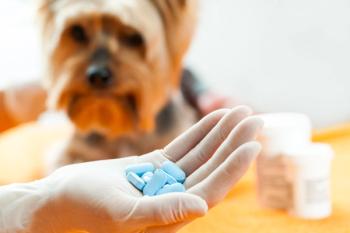
UN, WHO address public health concern over avian flu transmission to humans
Veterinary professionals working with certain animals are advised to take precautionary steps to minimize risk of infection, while researchers in Texas study potential H5N1 vaccines, antivirals, and antibody therapies for humans
On Thursday, April 18, 2024, the United Nations (UN) announced that the transmission of avian flu to mammals, including humans, is a "significant public health concern," according to UN medics.1 In a public statement shared by the UN, Jeremy Farrar, PhD, chief scientist at the World Health Organization (WHO) also said the highly pathogenic avian influenza (HPAI) virus “has become a global zoonotic pandemic.”1
H5N1 primarily infects wild birds and poultry but has also been detected in mammals including cattle, mink, foxes, bears, seals, cats, dogs, and goats.2 In Texas, an individual with avian influenza had contact with infected dairy cows that are believed to be the source of transmission to a human.2,3 Meanwhile, the CDC is continuing to encourage veterinarians, veterinary staff, and other individuals to minimize their risk of avian influenza A (H5N1) virus infection by taking precautionary steps when working with animals such as poultry and livestock or materials possibly or confirmed to be infected.4
Globally, there were 887 cases of human H5N1 infection—from January 1, 2003, to February 26, 2024—of which 52% were fatal, according to WHO.5 The H5N1 case in Texas is the United States’ first reported human infection of 2024. It is also the second human case to ever be confirmed in the US, with the previous infection occurring in 2022, in Colorado.4
According to Kay Russo, DVM, MAHM, DACPV, an industry veterinarian, who has worked as a private dairy practitioner, WHO’s documented mortality rate may be higher than the actual mortality rate in humans because of a bias related to the severity of illness in those who sought care. However, she noted, we still need to have a healthy respect for what this virus is capable of. “The human cases in this current dairy situation are underrepresented due to a lack of testing,” Russo said in an interview with dvm360®.
Thus far, no human-to-human transmission has been reported. However, the UN and WHO addressed the issue while announcing updated language for consistency with airborne pathogen descriptions. The goal of the language changes is to increase international cooperation in the event of a new global pandemic, according to the UN.1
Personal protection
The CDC recommends minimizing the risk of human infection by avoiding unprotected direct or close physical contact with birds, livestock and other animals that are sick, as well as animal carcasses, feces or litter, and raw milk. Water and surfaces that could be contaminated with animal excretions should also be avoided.4
Additionally, the CDC recommends that veterinarians, veterinary professionals, and other individuals working with sick or dead animals, including backyard bird flocks, or materials that could contain H5N1 wear personal protective equipment (PPE). After washing hands with soap and water, the agency suggests putting on PPE in the following order: fluid-resistant coveralls, waterproof apron, NIOSH-approved respirator, fitted unvented or indirectly vented safety googles or face shield, head or hair cover, gloves, and boots. Care should also be taken while working in PPE to avoid touching eyes, mouth and nose; and while removing and disposing of PPE to avoid personal contamination and contaminating clean areas.4
Potential human therapies
In Texas, potential vaccines, antiviral drugs, and antibody therapies that may protect humans against avian influenza are being studied. The nonprofit Texas Biomedical Research Institute (Texas Biomed) in San Antonio, recently announced its work targeting strains of the HPAI virus including H5N1.2
"Thankfully, the risk of the current H5N1 case becoming widespread among people remains low," Larry Schlesinger, MD, Texas Biomed president and CEO, said in a news release.3 "But viruses adapt and evolve–especially influenza viruses–which is why it is so critical to be studying them and developing vaccines and treatments well before they are needed."
In 2023, investigators at Texas Biomed received approval from the USDA and the CDC to pursue work on avian influenza. According to the institute, work on this initiative began in March—after laboratory preparations—to evaluate whether existing vaccine, antivirals and antibodies are effective against H5N1 strains of avian influenza.2
Texas Biomed investigators are applying advanced tools and techniques that they use to study viruses like seasonal influenza and COVID-19, according to the institute. Their work takes place in a higher biosafety level laboratory, following protocols approved by federal biomedical research regulators.2
"The genetic sequencing analysis from the CDC indicates that the H5N1 strain found in the [human] patient does not have any mutations associated with resistance to current antiviral drugs," Luis Martinez-Sobrido, PhD, a professor at Texas Biomed who leads the laboratory researching potential avian influenza therapies, said in the release.2 "However, it is important to continue developing an array of countermeasures in case existing ones lose effectiveness."
Takeaways
Over the past century, there have been numerous epizootic events with avian-origin influenza viruses, according to Russo. “Influenza viruses, particularly influenza type A viruses, are concerning because of their ability to mutate, pick up virulence, and adapt to different hosts like humans, cows, and cats…We’re seeing unprecedented mortalities in avian and mammalian species, even in the waterfowl, which is considered the natural reservoir for these influenzas,” Russo said.
Rare in humans, H5N1 has been spreading worldwide over the past few years through transmission from migratory birds to terrestrial and domestic birds. "We still don't know a lot about this virus, for example, what are the genetic determinants that enable this virus to transmit from avian hosts to other mammals?" Ahmed Elsayed, PhD, a staff scientist with Texas Biomend, who has studied avian influenza for 16 years, said in the release.2 "We need to study this virus as a 'One-Health' approach to be able to face it."
Russo emphasized that early detection and intervention in the form of antivirals are critical to avoid any severe health outcomes from this virus. “Should this virus develop the ability to spread from human to human, [other] individuals living in the household of the infected individual may be at risk. Testing and proper follow-up are strongly encouraged by the CDC. All testing is anonymous,” Russo said.
This article was updated on April 19, 2024 to include additional information.
References
- Pandemic experts express concern over avian influenza spread to humans. United Nations. Accessed April 18, 2024.
https://news.un.org/en/story/2024/04/1148696 - Texas Biomed researching vaccines and treatments for highly pathogenic avian influenza. News release. Texas Biomedical Research Institute. April 18, 2024. Accessed April 18, 2024.
https://prnmedia.prnewswire.com/news-releases/texas-biomed-researching-vaccines-and-treatments-for-highly-pathogenic-avian-influenza-302120203.html - Parkinson J. Avian flu reported in first American this year. ContagionLive. April 2, 2024. Accessed April 18, 2024.
https://www.contagionlive.com/view/avian-flu-reported-in-first-american-this-year - Recommendations for worker protection and use of personal protective equipment (PPE). CDC. April 15, 2024.
Accessed April 19, 2024. https://www.cdc.gov/flu/avianflu/h5/worker-protection-ppe.htm - Human infection with avian influenza. World Health Organization. March 22, 2024. Accessed April 17, 2024.
https://cdn.who.int/media/docs/default-source/wpro---documents/emergency/surveillance/avian-influenza/ai_20240322.pdf?sfvrsn=22ea0816_43
Newsletter
From exam room tips to practice management insights, get trusted veterinary news delivered straight to your inbox—subscribe to dvm360.






